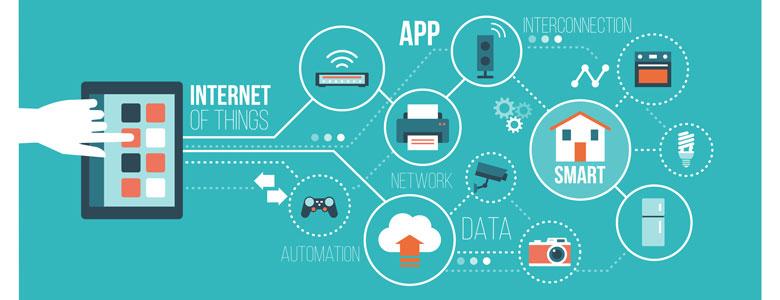
If you have been reading up on the current digital trends, there is no doubt that Internet of Things (IoT) has featured heavily. In the coming years, it will make a dramatic difference to the day-to-day lives of even the most technologically inept individual.
What is IoT?
An article published on ZD Net by Steve Ranger defines IoT as 'the billions of physical devices around the world that are now connected to the internet, collecting and sharing data'. This concept of connected devices has been around since the 1970's with the term being coined in 1999 by Kevin Ashton during his time at Procter & Gamble.
What will the future look like?
Gartner estimates that there are currently more than 8.4 billion connected devices, up by more than 30% from this time last year. In 2020, this figure is estimated to increase to 25 billion connected devices worldwide.
IoT spending set to soar
A study by the consulting firm Bain & Company found that the IoT budgets of large companies will grow to an annual total of €450bn over the next four years. This figure is much larger than previously anticipated with the previous report published in 2016 only predicting that this figure would be €395m by 2020. Although this report shows that companies are eager to use devices such as factory sensors and video surveillance gear, the number one concern for customers is security, with 42% stating that the risk of being hacked made them anxious about adopting IoT.
Who will use connected devices the most?
Consumers are the largest user base of connected devices with 5.2 billion connected devices, representing 63% of the overall number of IoT applications used. Enterprise comes in at second, with 3.1 billion connected devices in 2017.
Data and IoT
Data is driving the cultural and financial revolution. IoT devices are being used to gather previously inaccessible, valuable and profitable consumer data. Behemoths such as Google and Amazon rely on this data to create their huge revenue streams by selling it at a hefty price to advertisers and influencers. However, the Internet of Things is not just about gathering data, it’s also about its use and analysis. This has led to the creation of more Data Analytics jobs because the data would be deemed useless if there was no way to decipher it.
Security and IoT
This issue with data also involves the issue of cybersecurity. How will you store the data? How will you manage data collection and processing functions? Will this fall into GDPR? These are all questions that must be observed before diving head first into the tidal wave of IoT.
There is no denying the impact IoT has had on our daily lives. For example, IoT products have granted us extended control over appliances, lights, and door locks. They have even helped streamline business processes and connect us to the people, systems, and environments that shape our lives.
As originally featured in the Huffpost, Jeremy M. Williams of Vyudu Inc. believes “The physical world and the digital world are merging together and the more our physical products sense and react to our needs, the more alive they become. Our digital world is now responding and changing along with our physical world, thus we are making our physical world a programmable paradise. The role of platforms will, without question, become more important as the digital world becomes seamlessly integrated within our physical world. Over the next 3-5 years, I expect that we’ll see more legacy grade systems such as HVAC (heating, venting, and A/C systems) becoming cyber-enabled or in other words, IoT integrated. Security will become the most important component of IoT so the users of tomorrow must make their voices heard by demanding that key security features be included in all smart products. We all need to inform IoT vendors that we are not going to purchase their products without key security features and unrivaled data protection. The best is still at least 10 years away and even that will still be only the tip of the iceberg, all we can do is enjoy the ride”.
What is clear, is that IoT is not going away, it will only grow over the next few years. From smart homes to smart cities, there is no stopping this digital revolution and it is something all businesses and people will have to be prepared for.